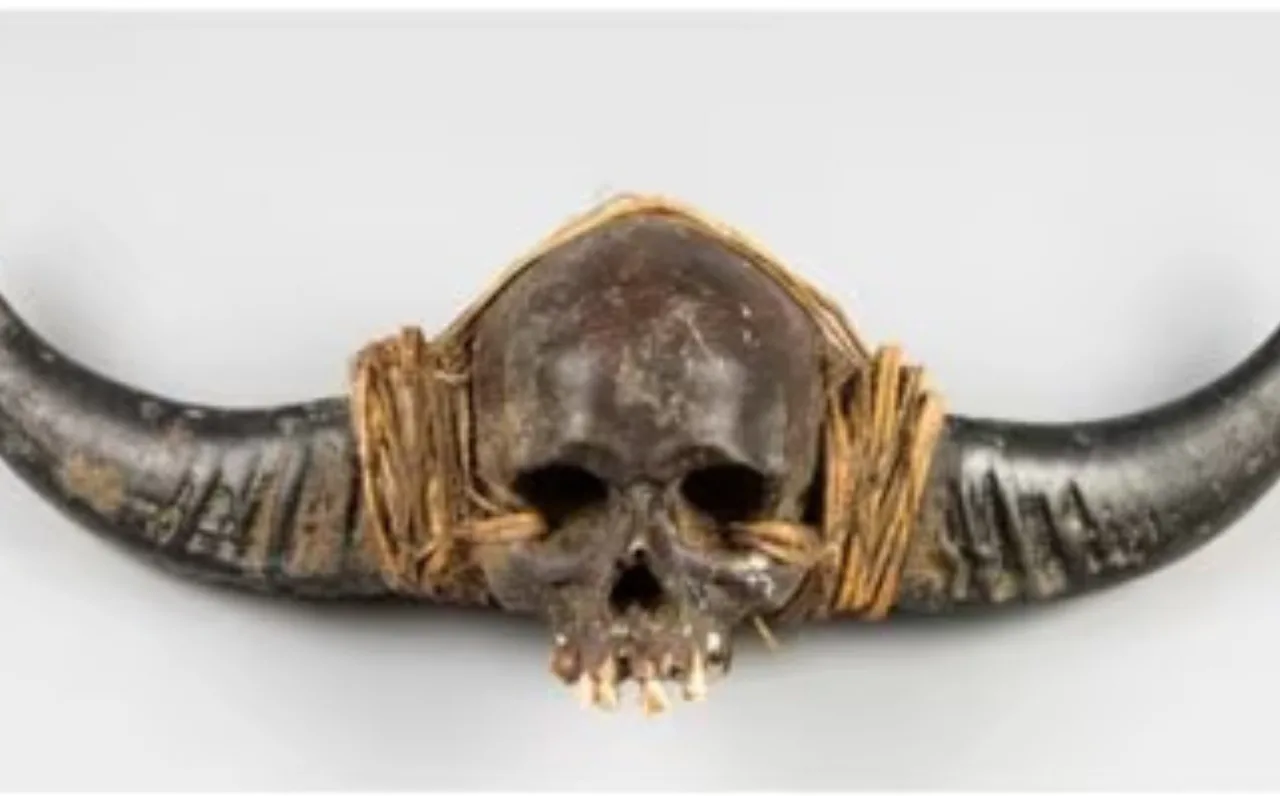A major controversy unfolded over the attempted auction of a Naga human skull in the UK, a relic believed to be from the 19th century, with profound cultural and historical significance for the Naga people of northeastern India. The auction drew sharp protests and eventually was removed from sale. The incident highlights the complex interplay between cultural heritage, ethical questions surrounding human remains, and the ongoing debate over the restitution of indigenous artifacts.
The Naga skull mounted on a brass plaque was listed by an unnamed auction house in London, promoting it as a “trophy skull” collected during the 19th century. Such items, while drawing interest from collectors of anthropological artifacts, often carry deep meaning for indigenous communities.
As soon as news of the sale broke, it sparked immediate outrage among the Naga community and beyond. Prominent Naga leaders, including Nagaland’s Chief Minister Neiphiu Rio, expressed their strong disapproval. Rio wrote to India’s Ministry of External Affairs, requesting intervention to stop the sale and ensure the return of the artifact to India. He emphasized that such items, far from being mere collectibles, represent a significant part of the cultural identity and heritage of the Naga people.
In response to the protests, The Swan Fine arts auction house decided to withdraw the item from the sale. The decision was celebrated by advocates for indigenous rights, who have long argued that the sale of human remains—especially those linked to marginalized or colonized groups—violates ethical standards.
The sale of the Naga skull brings into focus the complex legacy of colonialism and the collection of artifacts from indigenous communities. During the British colonial era, it was common for European explorers, soldiers, and traders to collect objects from indigenous groups, including human remains, as curiosities or trophies. These items were often transported back to Europe, where they were displayed in museums or private collections, divorced from their original cultural contexts.
For the Naga people, skulls held a sacred place in their society, particularly in the tradition of headhunting, a practice that was part of their socio-political fabric until the early 20th century. Skulls were considered potent symbols of power and protection. However, with the advent of British colonial rule and the imposition of Western moral standards, such practices were discouraged, and many of these artifacts were removed from Naga lands.
Today, many indigenous groups, including the Nagas, are calling for the return of these artifacts, arguing that they belong in their rightful cultural context. The attempted auction of the Naga skull is just the latest in a long line of similar incidents where indigenous communities have had to fight for the restitution of their heritage.
The sale of human remains in the global art market has always been a controversial issue. While some collectors view these items as historical artifacts, others see their sale as a violation of human dignity and a disrespect to the cultures from which they originate. In the case of the Naga skull, critics argued that its auction represented not only an act of cultural insensitivity but also a continuation of the exploitative practices of colonialism.
Human remains, especially those of indigenous people, are often caught in the crossfire of ethical and legal debates. Laws governing the sale of such items vary widely across countries. In the UK, while the sale of certain human remains is regulated, it is not outright prohibited, leading to instances where items like the Naga skull can end up on the auction block.
Moreover, the case raised important questions about the role of auction houses and private collectors in perpetuating the trade of indigenous artifacts. Critics have called for stricter regulations and a more ethical approach to handling items of cultural significance, including consultations with the communities from which these artifacts originate.
The protests over the Naga skull have wider implications for the global conversation on the restitution of cultural property. In recent years, there has been increasing pressure on museums and private collectors to return artifacts to their countries or communities of origin. High-profile cases, such as the return of the Benin Bronzes to Nigeria and the Parthenon Marbles to Greece, have brought these issues to the forefront of international discourse.
For indigenous communities like the Nagas, the fight for the return of their cultural heritage is not just about reclaiming physical objects but also about restoring a sense of identity and agency that was eroded by colonialism. The successful withdrawal of the skull from auction is seen as a small victory in a larger struggle for justice and recognition.
As the global conversation on the restitution of cultural property gains momentum, this incident exemplifies the deeper struggles faced by indigenous communities in preserving their heritage and reclaiming their dignity. More than a successful protest, it represents a broader call for respect and justice for marginalized peoples whose histories have long been appropriated. Moving forward, this case underscores the need for a more conscientious and legally binding framework to ensure that sacred objects are treated with the reverence and rightful ownership they deserve.
